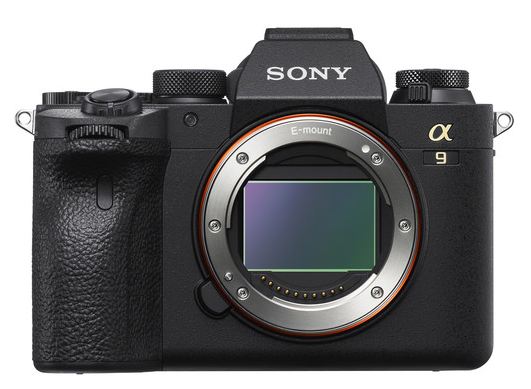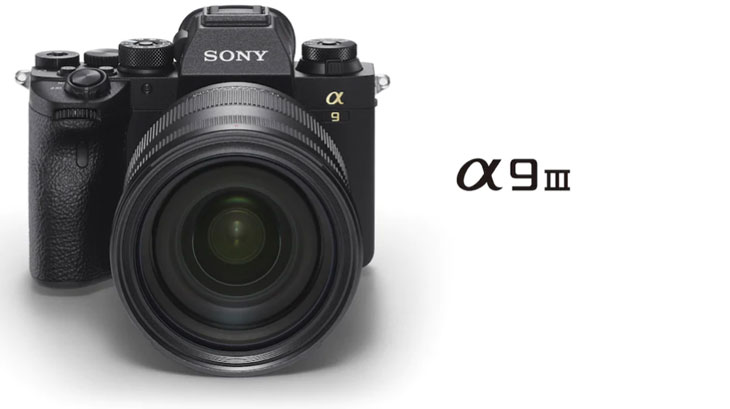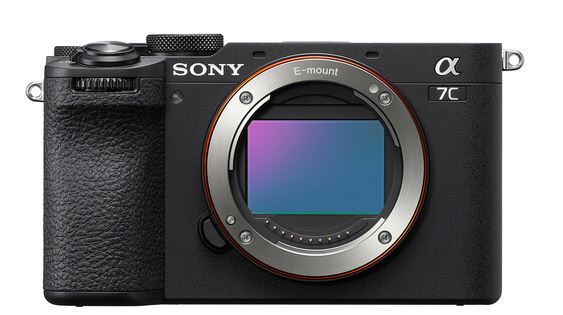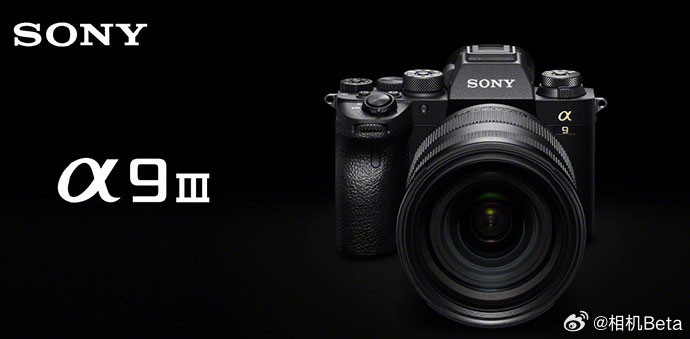Join More Than 50,000+ Subscribers and get latest camera news and rumors
NEW CAMERA VIDEOS ON YOUTUBE
|
By admin, on November 4th, 2023

Finally, we have some good news the Sony A9 III camera is coming, we will share the specs and images of the camera as soon as they become available to us. Sony Alpha Universe has a dedicated page for the upcoming announcement.

Sony LIVE Event Teaser Page
Sony ZV-E10 II in Announcement Pipeline
Sony Upcoming Camera 2023 – 2024
Follow us on our social pages FACEBOOK | TWITTER | INSTAGRAM, If you have time –>see more Sony Alpha Rumor
By admin, on November 3rd, 2023

What we have seen in the past, 10 to 15 days before any official announcement of a Sony camera, leaked images and a full set of core specifications are generally available all over the web via the rumor mills. As of November 3, there is no concrete information available related to the upcoming camera, nor any leaked images. It indicates that there is a huge possibility that the A9 Mark III camera is not coming on November 8. And that’s why Rumor mills are saying that A9 III will delay, see more details below
According to the latest rumors, the Sony A9 Mark 3 camera announcement may get delayed, and the next possible date is sometime around January 2024. The rumored specifications and announcement date of the Sony A9 Mark III camera are as follows:
Sony A9 III rumored specification
- 33 megapixel full-frame stacked sensor
- 40 fps 12-bit raw
- 30 fps 14-bit raw
- 4K 24/25, 30, 50/60 fps
- 1080 24/25, 30, 50/60, 100,120 fps
- No 8K video
- No mechanical shutter
- Sony A1 design and ergonomics
- Price: $4,498
- November 8, 2023 announcement (expected to arrive in Jan 2024*)
If you look at the price of the camera then for sure the camera price is higher than the competition, compared to the specs of the Nikon Z8 camera the overall rumored specs of the Sony A9 III, that we see right now look slightly inferior without a doubt.
We were expecting at least the introduction of a 50-megapixel sensor to compete against Z8 of Sony Alpha A1 in the body of the Sony A9 Mark III with some limitations (to protect the sales of the Sony Alpha A1 camera). At least with the 50 MP sensor and advanced Dual Bionz X processor, the camera will be able to compete with the Nikon Z8 camera.
Our expectations with the Sony A9 III
- 50MP Full-Frame Exmor RS BSI CMOS Sensor
- Up to 60 fps Shooting, ISO 50-102400
- 8K 30p and 4K 120p Video in 10-Bit
- 3.7 m-Dot EVF (Blackout free)
- 759-Pt. Fast Hybrid AF, Real-time Eye AF
- 5-Axis SteadyShot Image Stabilization
- Dual CFexpress Type A/SD Card Slots
Share your thoughts in the comment box below
Follow us on our social pages FACEBOOK | TWITTER | INSTAGRAM, If you have time –>see more Sony Alpha Rumor
source SAR website
By admin, on October 31st, 2023

According to the latest rumors, the price of the upcoming Sony A9 III camera is expected to be somewhere around $4,500 which is similar to the price of the Sony A9 Mark 2 camera. However, it is not a competitive price because the price of the Nikon z8 camera is around $4,000. If the Specs of the Sony a93 camera don’t surpass those of the Nikon z8, it may not be the first choice for consumers, sony will sure not gain any new consumers with the announcement of A9 III, yes existing sony users may upgrade.
Follow us on our social pages FACEBOOK | TWITTER | INSTAGRAM, If you have time –>see more Sony Alpha Rumor
source asobinet
By admin, on October 27th, 2023

According to the latest information we have, Sony Japan is holding an event on November 8 and 9, which directly verifies the previously reported news of Sony events on November 8 and 9.
They have created a dedicated page with a big Alpha logo at the very center. It all indicates that this is not just a lens announcement. Sony never puts so much effort into a mere lens announcement. This clearly indicates that the Sony A9 Mark 3 camera is about to arrive on November 8, as previously stated. Now, it is a really big surprise that the announcement date is very close to us, even though the rumors are still unable to reveal the camera’s details and images. However, if we get any, they will be published
Sony LIVE Event Teaser Page
Sony ZV-E10 II in Announcement Pipeline
Sony Upcoming Camera 2023 – 2024
Follow us on our social pages FACEBOOK | TWITTER | INSTAGRAM, If you have time –>see more Sony Alpha Rumor
By admin, on October 24th, 2023

Sony has issued a major firmware update for the recently announced Sony A7 C Mark II camera, as well as the Sony A7 CR. This significant update fixes the major bugs inside the camera and improves its overall performance. Take a look at the list of improvements Sony has made to the camera.
Sony A7C Mark II Firmware Version 1.01
- Fixed the issue where high ISO noise reduction couldn’t be set under certain circumstances.
- Fixed the issue where some video metadata (like shutter speed, aperture value, ISO value, etc.) might not have been recorded.
- Improved the overall stability of the camera.
For more details visit Sony website
Follow us on our social pages FACEBOOK | TWITTER | INSTAGRAM, If you have time –>see more Sony Alpha Rumor
By admin, on October 23rd, 2023

According to the latest rumors, Sony is holding an event in New York on November 7 and 8 for the release of new products. It is said that some European sports photographers have been invited to participate in the event in Istanbul, which coincides with the New York event timings. It is also fascinating that not only Sony’s photographers but even those using Canon and Nikon systems are invited to this Sony event. So, there is a very high probability that the Sony A9 Mark 3 camera will officially arrive on November 7 or 8, 2023
Sony ZV-E10 II in Announcement Pipeline
Sony Upcoming Camera 2023 – 2024
Follow us on our social pages FACEBOOK | TWITTER | INSTAGRAM, If you have time –>see more Sony Alpha Rumor
source cambeta
By admin, on September 27th, 2023

More rumors related to the Sony A9 III camera are surfacing as the announcement date draws closer. We will soon have a confirmed set of specifications as well as images of the upcoming camera, but before that, let’s have a look at the set of rumors we have related to the A9 III camera.
According to the latest set of LATEST set of leaks, this camera will feature a 44-megapixel full-frame stacked CMOS sensor with the ability to record 8K video at 60 frames per second. Take a look at the major specs below.
Sony A9 III Specification [Latest Rumored]
Although the mentioned specifications are slightly different from those we have shared in the past, we still believe that before announcing a flagship camera, the camera maker tests different types of prototypes in their lab. Maybe the recently mentioned 44MP-based model is one of the few prototypes of the A9 III camera.
Sony A9 III Specification [Rumored]
- 50MP Full-Frame Exmor RS BSI CMOS Sensor
- Up to 60 fps Shooting, ISO 50-102400
- 8K 30p and 4K 120p Video in 10-Bit
- 3.7 m-Dot EVF (Blackout free)
- 759-Pt. Fast Hybrid AF, Real-time Eye AF
- 5-Axis SteadyShot Image Stabilization
- Dual CFexpress Type A/SD Card Slots
We have to wait and see which camera bodies finally get approved for the production line.
As soon as we get any new information related to the A9 III camera, we will update you soon.
sources SAR
|
KEEP THIS BLOG ALIVE - Support New Camera Buy Canon Lenses, Buy Music CD or Digital Camera at amazon it helps this site, and you do not pay anything extra, it is just a way to help support this site.

|











